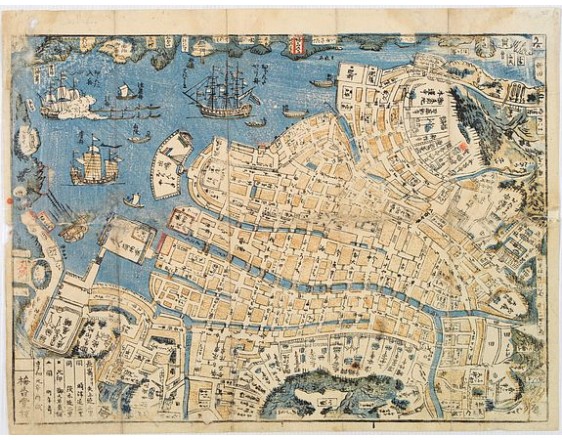BAIKO-DO. - Shinkan Nagasaki no Dzu.
 Click on image to zoom
Click on image to zoom

Description
The map shows much activity of the foreign ships. In the bay are anchored Dutch ships and Chinese Junks. One Dutch ship, undertowed by lines of tugboats, is firing its cannons in greeting.
Throughout the Edo period, Nagasaki, along with Kyoto, Osaka and Edo was the scene of a flourishing publishing business in woodblock prints. Maps of Nagasaki were first published in the 1670s and from the 1770s on, they came out in a constant stream.
Due to the Dutch presence in Nagasaki, Japan learned many aspects of the scientific and technological revolution occurring in Europe at that time, helping the country build up the beginnings of a theoretical and technical scientific base, which helps to explain Japan's success in its radical and speedy modernization following the opening of the country to foreign trade in 1854.
With its original cover, including distance tables to main places from Nagasaki.
Upper part from right to left: Kyoto 210ri, Edo 332ri, Osaka 197ri, Shimonosek 59ri,Bungo Hita 46ri, Higo-Kumamoto 39ri, Satsuma-Kagoshima 65ri, Hiuga-Satohara 71ri. Lower part: Hizen-Saga 29ri, Chikuzen-Fukuoka 50ri, Hirado 32ri, Karatsu 32ri, Kurume 36ri, Yanagawa 32ri, Shimabara 16ri and Omura 10ri. 1ri = 4km.
- Reference N°: 01018
